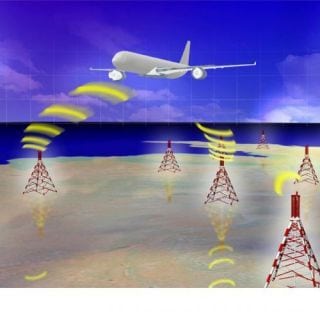[Avionics Today July 2, 2014] The FAA’s new rule allowing airline passengers to connect to in-flight Wi-Fi networks from takeoff to landing has not increased the percentage of passengers using their Personal Electronic Devices (PEDs) on commercial flights in the United States, according to a new study.

Photo, courtesy of Gogo.
Depaul University’s Chaddick Institute for Metropolitan Development performed a four month study of passenger connectivity usage for 20 different flights on five of the biggest commercial airlines in the U.S., including Delta, United, American, Virgin America and Alaska Airlines. The study found that 35.9 percent of passengers are connected to in-flight Wi-Fi networks during any phase of flight.
FAA’s rule change went into effect in October 2013, and seemed to be a bright spot for in-flight connectivity providers, as the agency acknowledged that modern aircraft avionics systems do not suffer interference from passenger’s PEDs. That opened up more in-flight time for the use of Internet connectivity, however, according to the authors of the study, the change is not inspiring more passenger use of the in-flight connectivity networks offered by airlines.
“Consumers are decidedly unenthusiastic about the change, since they still cannot surf the Internet, email, text or place phone calls during takeoff or landing, which can consume more than 40 minutes of flight time,” said Joe Schwieterman, director of the Chaddick Institute and co-author of the study. “We expected the new policies to encourage more consumers to remain ‘powered up’ from gate to gate, but that simply didn’t happen.”
Since the study first began observing airline passengers’ use of in-flight connectivity in 2009, the number of connected passengers onboard commercial flights increased an average of nearly 6 percent through 2013.
According to the report, the most commonly used devices on passenger aircraft currently are tablets and e-readers. More than a third of all devices being used by passengers in the study were either tablets or e-readers.
One aspect that the study did not account for is the slow connection speeds that are featured on commercial airline flights. Despite the advancements that have occurred with in-flight technology, most connection speeds are still well below the speeds that consumers are used to on the ground.
In-flight connectivity providers are looking to change that though. For example, Gogo’s ATG-4 service launched in 2013 featured peak speeds of about 9.8 Mbps, whereas their new
Ground to Orbit (GTO) system will deliver peak speeds of more than 70 Mbps. Whether that contributes to a greater increase in the number of passengers using in-flight Wi-Fi connectivity remains to be seen.
“Travelers want to stay in control and that means staying digitally connected,” notes Schwieterman. “Many still view being aloft as dead time, even when Wi-Fi can be purchased. A sizable share of flyers simply say ‘to heck with it’ and suspend technological pursuits until they reach their destination.”